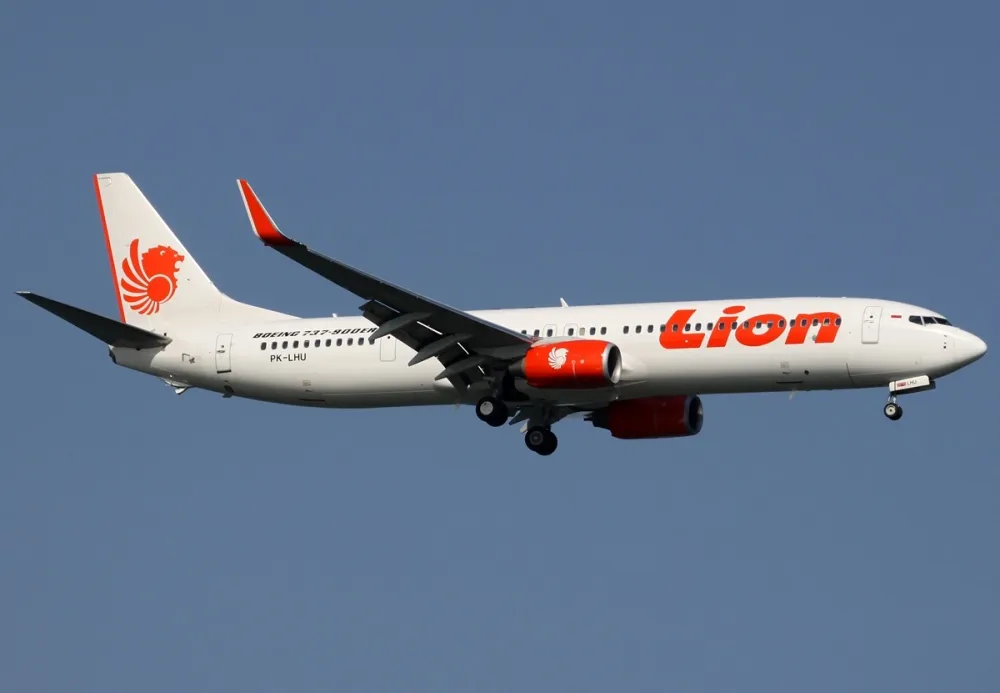
Confusion and prayer in Lion Air cockpit
Mar 20, 2019

In the cockpit of Lion Air flight 610, a sense of urgency and confusion unfolded as critical systems malfunctioned shortly after takeoff. Pilots struggled to understand the alarming alerts and the aircraft's rapid descent, leading to a frantic exchange of commands. Amidst their efforts to regain control, moments of prayer emerged as they sought divine intervention in the face of impending disaster. The tension and uncertainty heightened as they grappled with the failing equipment, reflecting the human instinct to seek solace in faith when confronted with life-threatening challenges. Tragically, the combination of technical failures and human error culminated in a devastating outcome.
The tragic events surrounding the Lion Air flight have sparked significant discussion regarding the cockpit environment during critical moments. Understanding the factors that contributed to the confusion and the role of prayer in such high-pressure situations can offer insights into cockpit resource management and crew dynamics.
Understanding Cockpit Confusion
Cockpit confusion can arise from a myriad of factors, including miscommunication, equipment malfunction, and unexpected environmental conditions. In the case of Lion Air, the crew faced multiple challenges that could lead to heightened stress levels and impaired decision-making.
One of the primary contributors to confusion is the "communication" between cockpit crew members. When pilots do not clearly convey information or when there is a breakdown in communication, it can lead to misunderstandings. This is particularly critical during emergency situations where every second counts.
The Role of "Prayer" in High-Stress Situations
In many cultures, "prayer" serves as a source of comfort and strength, especially in high-stress environments like an aircraft cockpit. For the pilots of Lion Air, the act of praying may have provided a moment of calm amidst the chaos. This psychological aspect is often overlooked but is crucial in understanding how individuals cope with extreme pressure.
Research indicates that practices such as meditation and prayer can have positive effects on mental clarity and emotional stability. In the context of aviation, where split-second decisions can mean the difference between life and death, maintaining a clear mind is essential. The act of praying could help pilots refocus and regain control over their thoughts and actions.
The Impact of "Training" and Preparedness
Effective training is vital for any aviation crew. In situations of confusion, well-trained pilots are better equipped to handle emergencies. Comprehensive training programs that include "simulations" of high-stress scenarios can prepare crew members for real-life challenges. Such training not only focuses on technical skills but also emphasizes teamwork and communication.
| Training Aspect | Benefit |
|---|---|
| Simulated Emergencies | Improves Decision-Making Skills |
| Communication Exercises | Enhances Team Coordination |
| Mental Resilience Training | Boosts Coping Mechanisms |
The Importance of "Cockpit Resource Management"
Cockpit Resource Management (CRM) is crucial in mitigating confusion. CRM emphasizes the importance of teamwork, communication, and situational awareness. A well-implemented CRM program can reduce the likelihood of confusion during critical operations.
In the Lion Air incident, effective CRM could have potentially altered the outcome. By fostering a culture of open communication and mutual support, crews can better navigate uncertainties. This approach encourages all team members to speak up when they notice something amiss, which can be lifesaving.
Analyzing the "Lion Air Incident"
The Lion Air flight incident serves as a case study in understanding the complexities of cockpit dynamics. Several factors contributed to the confusion experienced by the crew. Technical issues with the aircraft’s systems, combined with the psychological stress of the situation, created a challenging environment.
Here are some key points that emerged from the analysis of the incident:
- Technical Malfunction: The aircraft experienced a malfunction that required immediate attention, adding to the stress of the situation.
- Pilot Communication: There was a reported lack of clarity in communication between the pilots, which led to misunderstandings about the aircraft's status.
- Psychological Stress: The high-pressure environment likely impacted the pilots’ decision-making abilities.
Conclusion: Lessons Learned for Future Flights
The Lion Air incident highlights the critical need for ongoing training and the implementation of effective CRM strategies. Understanding the role of "prayer" and psychological coping mechanisms can also provide valuable insights into how pilots manage stress. As the aviation industry continues to evolve, focusing on these elements will be essential in enhancing safety and reducing confusion in the cockpit.
By addressing these factors, airlines can better prepare their crews for the challenges of modern aviation. Ultimately, these lessons can contribute to safer skies for all passengers and crew members alike.
Related Articles

Explore Thailand: The Best Islands to Visit for Paradise, Adventure, and Relaxation

The Ultimate Guide to the Best Islands in Thailand for Your Next Getaway

Do babies need passports? How to get a passport for a newborn

How to get a U.S. passport fast: here’s how to expedite the process

What is Mobile Passport Control: 5 reasons why you should use it

SENTRI vs. Global Entry: A detailed guide

Do you need a passport to go to the Bahamas? Let’s find out

Do you need a passport to go to Mexico? A detailed guide

Do you need a passport to go to Canada? We got the answer

Do You Need a Passport for a Cruise: An Essential Travel Guide

Booster Seat Requirements: All the Rules to Follow in Your Rental Car

What Are the World’s Most Powerful Passports, and How Does Yours Rank?

How to Take a Passport Photo at Home: A Helpful Guide

You've got to have heart! Southwest's new livery

Your opinion: Should water be free on low cost carriers?

Young women bolder than guys as solo travellers
